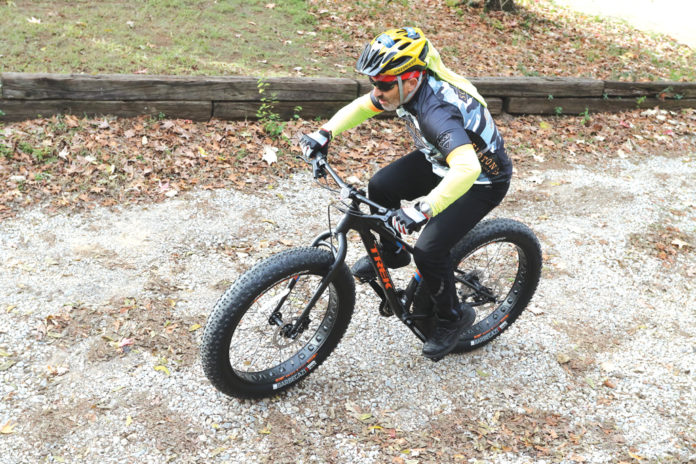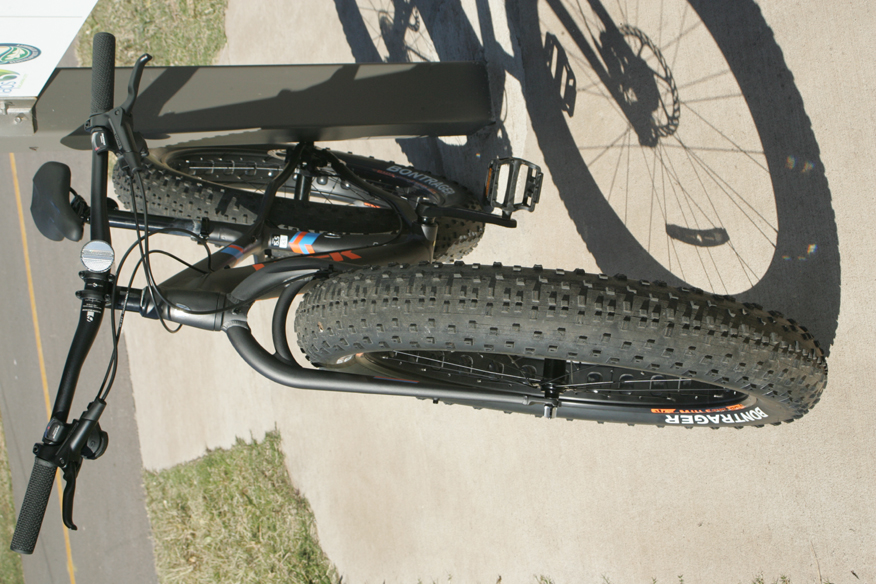
by Darl DeVault

Bicycling is experiencing a resurgence lately because it provides a fun, healthy way to spend time outdoors while riders keep a safe social distance from others. Seniors might consider the comfortable modern Fat Bikes that will bring back memories of bicycles in the 1960s.
Modern fat tire bikes, or Fat Bikes as they are called, are off-road bicycles providing seniors comfortable and smooth riding because of the oversized tires, no matter where they ride. The elderly appreciates these bicycles because they are designed so the rider maintains an upright position with no strain on their back. The handlebars are straight, again easing pressure on the back by not requiring a crouching position over the bike.
Seniors who cycle or want to start riding again might want to test ride a Trek Fat Bike. It is a cross between a light-weight racing bike, with its multi-speed gearing, and a balloon-tired “paperboy” bike of the 1950s.
Many seniors are riding more now because the activity can slow down the progression of aging, deterioration in muscle mass, and much more, according to many medical studies.
Remember your first balloon-tired bike? These new fat tires are almost three times bigger than those balloon tires, which expands regular 2-to- 2.25-inch mountain bike tires to a whopping, comfortable, cruising 4-5 inches. With all that squishy rubber under you, comfort rules the day.
These bikes have the best kind of frames for a senior, the step-through design. This enables the rider to get on and off the bicycle easily. It will perform well during your regular commute or a Sunday country ride. The choice of more gears is generally helpful. If you have a lot of climbing to do and prefer easy pedaling with more revolutions and less resistance for each pedal stroke, the gears provide that option.
With these big tires you achieve a floating sensation when riding along. Fat Bikes are a lot of fun and come with a built-in smile factor – you cannot help but grin to yourself if you like to bicycle.
These Fat Bikes have everything, as manufacturers are now putting real engineering and design technology into them. Racing-bicycle metallurgy, extremely light but strong, means the design allows the Fat tires to dampen road shock and provide stability over rough terrain.
Here is my recent off-road test. I took a Fat Bike off the pavement and up a nearby berm to test the fun.
The added buoyancy of plenty of air between the rim and the ground meant it was simply a matter of powering through the uneven terrain.
My first pass…. I started up the steeply sloping hillside only to discover about two-thirds of the way up that it was sandy soil. The loose soil quickly brought my speed down. When I noticed I was not making good progress I simply applied more power.
I continued my climb. What a feeling, I was on top of the world! I was in control and staying upright while climbing over difficult and uneven terrain.
It made all the difference in the world to my confidence to know that I had climbed the steepest area without using all the gearing available.
The length of the wheelbase, because of extra-size tires, alone adds a dimension of stability. Forget the huge contact patch with the ground; the longer wheelbase gives your ride a squish not available any other way. It seems to even some obstacles out without effort from the rider.
Senior riders can opt for significantly lower tire pressure. Think 15 or 10 psi, or even lower still. This gives the tire some significant squish, and that play translates to more rubber conforming to the trail for serious grip.
I rode back and forth on top of the berm several times, finding new routes, weaving in and out of the trees and around obstacles. I could cut back against the hill and accelerate to support my balance after going around bushes.
I was proud of being able to handle the bike in such tight quarters. I took on harder terrain, happy to come shooting out of the underbrush into the open unscathed.
So far, so good. Now it was time to ride down. I felt I was in control… that I could use the disc brakes and if necessary, the whole rear tire in slowing down. Coming down was a pleasure, the control of the bike suddenly became all mine again. Slaloming on the 4-inch fat tires was a breeze.
I felt I had more control over the bike descending than at any other time, especially with the longer wheelbase. I knew that if I kept my center of gravity low and the bike centered beneath me, those sturdy fat tires could take any punishment. This confidence allowed me to steer right where I wanted it to go.
While Fat Biking over changing terrain takes coordination, and quickness, it gives the cyclist the elation of triumphing over unpredictable conditions and challenges. Finally, it instills a “can-do” attitude that is as comfortable as a bicycle can get.
If you ride, please buy a helmet, and wear it. Today’s helmets are adjustable and comfortable to wear while the air flow through the vents keep your head cool.
Senior cyclists owning the new-generation Fat Bike can also try out what they term Gravel Rides, taking backcountry unpaved scenic routes on their new contraptions.
Imagine a bicycle with bigger than a paperboy balloon tires by two and a half times taking the tension off major joints, and you have the start of what you might find as the inspiration to cycle more.













